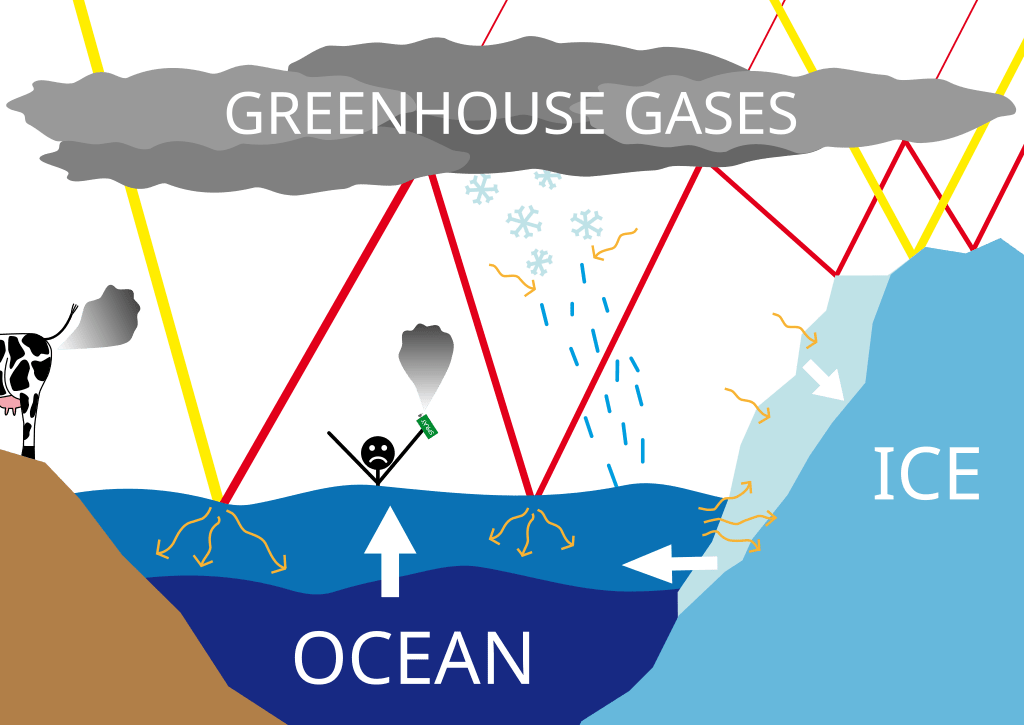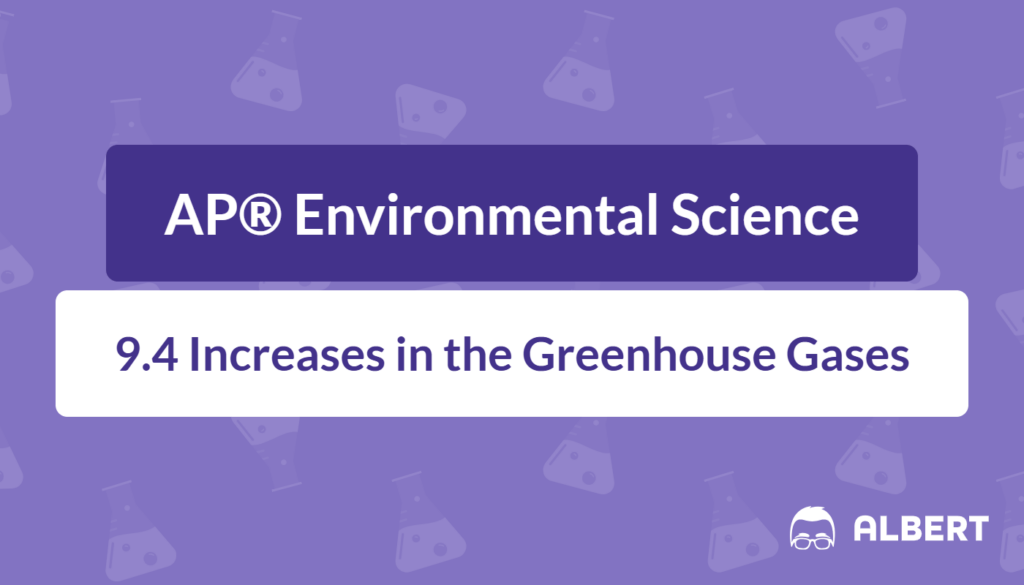What We Review
Introduction
Greenhouse gases play a critical role in regulating the temperature of Earth’s atmosphere. They trap heat close to the surface, which keeps the planet warm enough to sustain life. However, human activities have increased the levels of these gases, causing what is often called the enhanced greenhouse effect. The effects of the enhanced greenhouse effect have led to global climate change, with a wide range of environmental and health consequences. Understanding how greenhouse gases work and why their rising concentrations are significant will enable better decisions about mitigation strategies and renewable energy investments. Moreover, recognizing how changing climate conditions influence population movements and population growth models can help communities adapt to new realities.
In this review, each section will break down the main concepts on greenhouse gases, the enhanced greenhouse effect, and the resulting environmental changes. Specific examples and step-by-step explanations will clarify how carbon dioxide and other gases relate to natural cycles, such as the carbon cycle, and how humans contribute to these processes.
What Are Greenhouse Gases?
Greenhouse gases are those that can absorb and emit infrared radiation, thereby trapping heat in the atmosphere. The most common of these include carbon dioxide (CO_2), methane (CH_4), nitrous oxide (N_2O), and various fluorinated gases. Although these gases occur naturally, many human activities—such as burning fossil fuels, agriculture, and industrial production—are introducing them into the atmosphere at an accelerating rate.
Natural sources of greenhouse gases come from processes like respiration in animals, decomposition of organic matter, and volcanic eruptions. Human-made sources, however, now dominate the recent increase in greenhouse gas concentrations. For instance, greenhouse gas emissions from vehicles, power plants fueled by coal, and deforestation have made CO_2 levels much higher than in preindustrial times.
Example: The Carbon Cycle
The carbon cycle is the pathway through which carbon moves between the atmosphere, biosphere, oceans, and lithosphere. Plants, for example, absorb carbon dioxide through photosynthesis and convert it into organic matter. Animals then consume plants, releasing CO_2 back into the atmosphere when they breathe. Under normal conditions, this cycle maintains a balance. However, burning fossil fuels adds additional carbon to the atmosphere.
- Plants absorb CO_2 from the air.
- Animals eat plants, obtaining carbon-based compounds for energy.
- Animals respire and release CO_2 back into the atmosphere.
- Humans burn fossil fuels, releasing extra CO_2 that was previously stored underground.
This added carbon intensifies the greenhouse effect and shifts the balance of the carbon cycle.
The Enhanced Greenhouse Effect
The regular greenhouse effect keeps Earth’s temperature at a life-supporting level. Without it, the planet would be too cold for most organisms to survive. The enhanced greenhouse effect, however, occurs when excess greenhouse gases accumulate in the atmosphere. This causes more heat to be trapped, leading to an overall warming trend.
Human activities—particularly the burning of fossil fuels and deforestation—have accelerated this process. As CO_2 levels rise, more heat remains near Earth’s surface. Eventually, global temperatures increase, creating a range of environmental changes, such as melting ice and changing precipitation patterns.
Example: Step-by-Step Increase in CO_2 Levels
- Increased fossil fuel combustion: Factories, cars, and power plants release large amounts of CO_2.
- Reduced carbon uptake: When forests are cut down, fewer trees are available to absorb CO_2 through photosynthesis.
- More heat trapped: Higher CO_2 concentrations mean more infrared radiation is held in the atmosphere.
- Global warming: As temperatures increase, ice caps melt, and weather patterns shift.
This brief sequence demonstrates how an increase in CO_2 leads to global warming and the various downstream effects.
Global Climate Change
Global climate change refers to long-term alterations in temperature, precipitation, and other atmospheric conditions across the planet. It is primarily driven by the heightened greenhouse effect. When greenhouse gases accumulate rapidly, the climate reacts by warming, and weather patterns often become more extreme.
Consequently, many regions face shifting rainfall periods, stronger storms, and extended heat waves. These changes can challenge agricultural activities and even influence population dynamics. For instance, the reliability of historical precipitation trends becomes less predictable, forcing farmers to adapt by changing crop types or investing in more resilient irrigation methods.
Example: Heat-Trapping Process
Imagine the atmosphere acting like a blanket.
- Sunlight passes through the atmosphere.
- Earth’s surface absorbs solar energy and emits infrared radiation.
- Infrared radiation tries to escape into space.
- Greenhouse gases absorb part of this radiation and re-emit it, warming the surface.
If that “blanket” grows thicker with more greenhouse gases, less heat can escape, raising surface temperatures over time. Thus, the heat-trapping effect becomes stronger, fueling global climate change.
Environmental Problems Caused by Climate Change
Climate change has numerous environmental impacts. Rising sea levels, for example, stem from melting ice sheets and the thermal expansion of ocean water as temperatures climb. In low-lying areas, higher ocean levels can lead to saltwater intrusion, shore erosion, and permanent flooding of coastal zones. Additionally, more frequent and intense storms, such as hurricanes and typhoons, may accompany warmer ocean waters.
Another significant issue is the loss of biodiversity. Some animals and plants cannot adapt quickly to temperature shifts or habitat changes. Therefore, species distributions may shift toward cooler regions, while those that cannot migrate or adapt face an increased risk of extinction. Coral reefs, which are highly sensitive to temperature and acidity changes, serve as a clear illustration of how delicate ecosystems respond to climate fluctuations.
Example: Rising Sea Levels Impact on Coastal Areas
- Glaciers and polar ice sheets melt, adding more water to the oceans.
- Warmer water expands, raising sea levels further.
- Coastal regions experience more frequent flooding during high tides or storms.
- Saltwater damages cropland, causing decreased agricultural output.
Over time, these conditions can force communities to relocate or invest in costly infrastructure to protect against encroaching seas.

Health Impacts of Increased Greenhouse Gases
Rising global temperatures can intensify harmful weather events and contribute to new pathways for disease spread. When heat waves become more common, heat-related illnesses, such as heat exhaustion and heatstroke, can increase in vulnerable populations. Warmer climates also allow some disease-carrying vectors—like mosquitoes and ticks—to expand their range, placing more regions at risk.
Additionally, changing weather patterns may lead to higher stress on water supplies. Sporadic rainfall means clean drinking water can become scarce. In other regions, flooding and contamination can harm public health by increasing the spread of waterborne diseases. Therefore, local healthcare systems may be strained by higher demands for services in the face of these evolving threats.
Example: Urban Heat-Related Illnesses
Consider a large city experiencing an extreme heat wave:
- Concrete and asphalt absorb more heat during the day and release it slowly at night (urban heat island effect).
- Residents without air conditioning cannot escape the high temperatures.
- Hospitals see an influx of patients with dehydration and heatstroke.
- Authorities may open cooling centers or enact water restrictions to address the crisis.
This sequence shows how rising temperatures intersect with local infrastructure and public health.
Population Dynamics in a Changing Climate
Climate change can also influence population growth models and migration patterns. As environmental conditions shift, people may move away from regions prone to floods, droughts, or other climate-related stressors. Similarly, agriculture and food production can be disrupted by changing weather patterns, requiring communities to adapt their farming practices.
In some cases, population movements reshape regional demographics. For instance, rural dwellers facing repeated droughts may migrate to urban centers, hoping to find more stable water supplies and job opportunities. As a result, the receiving cities must invest in additional infrastructure, health care, and housing to handle the influx of new residents.
Example: Migration due to Drought
- Agricultural yields drop because of sustained drought.
- Residents lose reliable income and food sources.
- People move to areas with better access to water and employment.
- Host regions experience rapid population growth, straining local resources.
This process reveals how changes in rainfall patterns and temperatures can alter where and how people live.
Mitigation and Adaptation Strategies
Global climate change may seem overwhelming, yet there are solutions. Mitigation involves reducing greenhouse gas emissions by improving energy efficiency, adopting renewable energy sources, and protecting forests. For instance, installing solar panels or switching to wind power can lower CO_2 emissions. Additionally, reforestation projects sequester carbon, helping to offset some emissions.
Adaptation, in contrast, focuses on adjusting to inevitable climate impacts. Constructing stronger coastal defenses can protect against rising sea levels. Developing drought-resistant crops helps maintain agricultural productivity. These strategies, when combined, can significantly lower vulnerability to future climate uncertainties. Community outreach and education also play a key role, highlighting best practices for sustainable living and resource management.
Example: Reducing One’s Carbon Footprint
- Evaluate personal energy use by checking monthly electricity bills.
- Identify high-consumption areas (e.g., air conditioning, water heating) and switch to more efficient devices.
- Shift transportation choices by carpooling, using public transit, or driving electric vehicles.
- Support local reforestation projects to offset residual emissions.
Following this simple process can help reduce the amount of greenhouse gases released into the atmosphere.
Conclusion
In summary, greenhouse gases are integral to Earth’s temperature balance, yet their rapid increase has triggered an enhanced greenhouse effect that drives global climate change. This shift is observed in rising sea levels, altered weather patterns, and changes in population dynamics through migration and shifting agricultural practices. Human health also faces new challenges as heat waves intensify and disease vectors move into once-cooler climates.
Although the problem is urgent, mitigation and adaptation strategies offer hope. By cutting emissions of heat-trapping gases, transitioning to renewable energy, and developing more resilient infrastructure, societies can reduce harmful impacts on ecosystems and populations. For students of AP® Environmental Science, a deeper grasp of these concepts underscores the importance of informed choices and innovative solutions to safeguard the planet’s future.
Key Vocabulary
- Greenhouse Gases: Gases that trap heat in the atmosphere, affecting Earth’s climate.
- Enhanced Greenhouse Effect: Strengthened warming caused by increased concentrations of greenhouse gases due to human activities.
- Global Climate Change: Long-term alterations in temperature, precipitation, and other atmospheric conditions, mainly driven by the enhanced greenhouse effect.
- Rising Sea Levels: The increase in ocean levels as ice melts and water expands due to warming temperatures.
- Population Dynamics: Shifts in population sizes and distribution, often influenced by environmental changes, including those caused by climate factors.
Sharpen Your Skills for AP® Environmental Science
Are you preparing for the AP® Environmental Science test? We’ve got you covered! Try our review articles designed to help you confidently tackle real-world AP® Environmental Science problems. You’ll find everything you need to succeed, from quick tips to detailed strategies. Start exploring now!
- AP® Environmental Science: 9.1 Review
- AP® Environmental Science: 9.2 Review
- AP® Environmental Science: 9.3 Review
Need help preparing for your AP® Environmental Science exam?
Albert has hundreds of AP® Environmental Science practice questions, free response, and full-length practice tests to try out.








